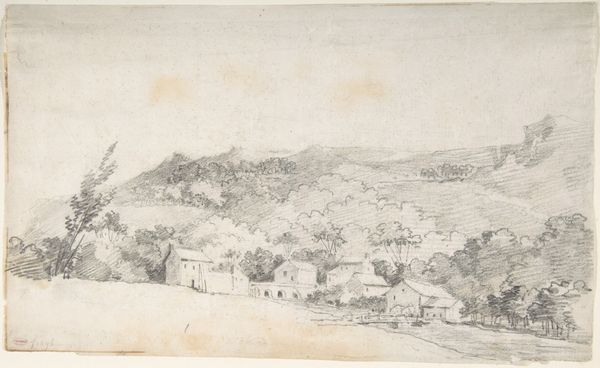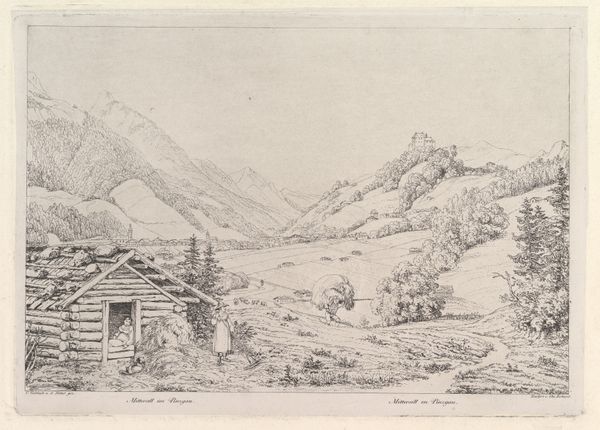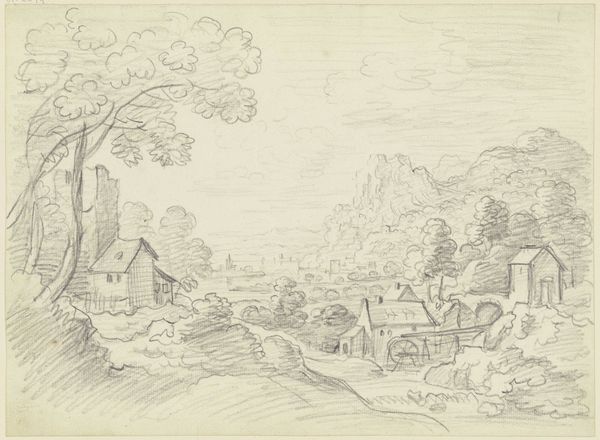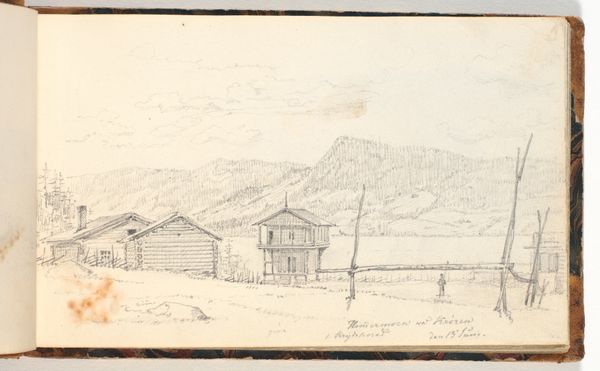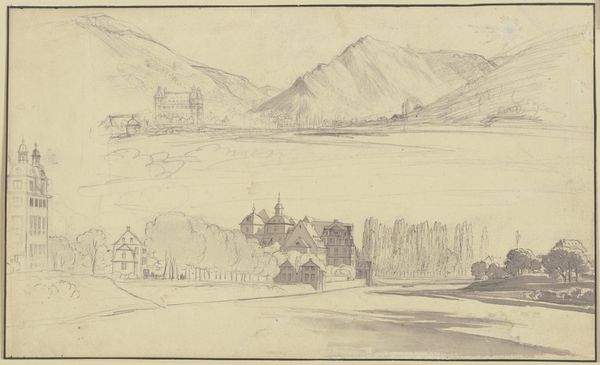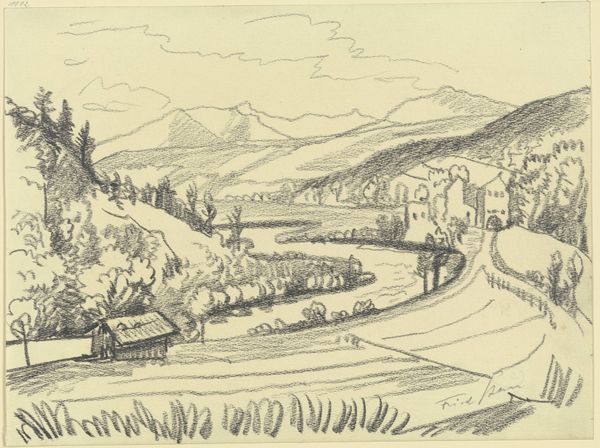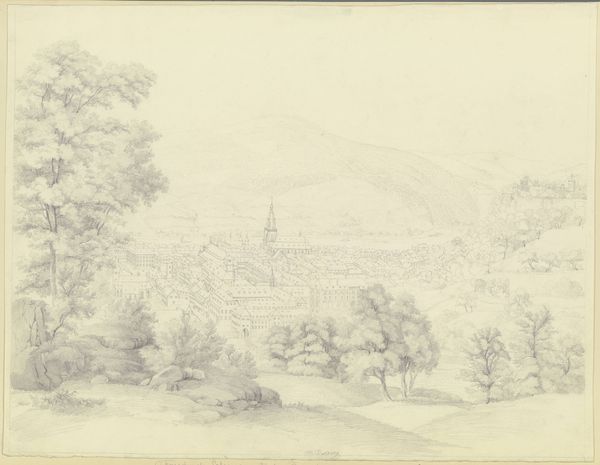
drawing, pencil
#
drawing
#
pencil sketch
#
landscape
#
romanticism
#
pencil
Dimensions: 296 mm (height) x 386 mm (width) (bladmaal)
Editor: So, here we have Johannes Flintoe's 1819 pencil drawing, "Næs Kirke i Hallingdal, set fra nordvest," a view of Næs Church in Hallingdal. There's something very stark about it, with its simple lines and muted tones. What stands out to you the most when you look at this? Curator: The spire, definitely the spire. It pierces the sky, a clear symbol of aspiration and faith. But notice how it's rendered, almost as delicate as the surrounding trees. It reminds us that even the most potent symbols are fragile, dependent on context and belief to maintain their power. Do you see any other symbolic imagery? Editor: I see a small cluster of buildings nestled amongst the trees in what is possibly the center of the image, hinting at community or home. How might that connect to what you said about the church spire? Curator: Exactly! The settlement speaks to earthly concerns – community, family, survival. But placed under the watchful eye of the spire, these simple dwellings are elevated. They exist within a larger narrative, connected to something transcendent. It’s an intentional juxtaposition. The sharp vertical of the church rises high above, a representation of the sacred. It gives meaning and focus to what might otherwise be just another valley settlement. Editor: That makes me wonder about the trees and the way they’re drawn almost as silhouettes in places... Curator: Precisely. The natural world, particularly those gnarled trees, become symbolic of time and endurance. They are witnesses to the narratives of faith and community unfolding below. Look at how they are positioned framing the whole composition; trees create boundaries between nature and divinity. Editor: I hadn't thought about that! It's like the whole drawing becomes a symbol itself, linking the earthly and the divine. Thanks! Curator: My pleasure. It’s rewarding to reveal those hidden connections!
Comments
No comments
Be the first to comment and join the conversation on the ultimate creative platform.




